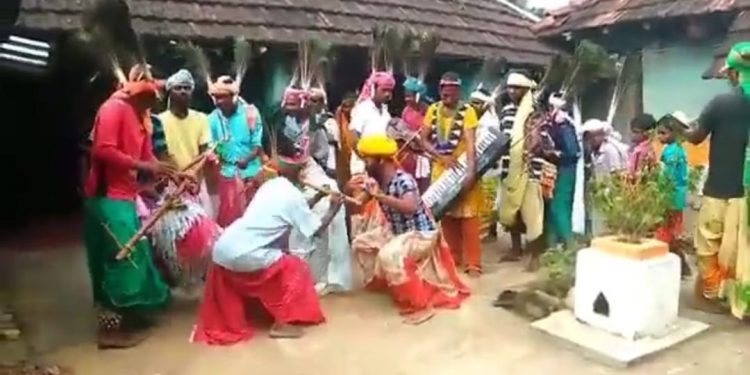Keonjhar: As Dussehra arrives, a festive fervour fills the atmosphere in villages, towns and cities alike and people gear up to invoke the mother Goddess Durga for a span of 10 days to their earthly abodes. While the major festival of Hindus is not celebrated among the tribal communities with much pomp and show, they mark the onset of autumn with merrymaking coupled with songs and dance. Dassain dance, a unique culture barely kept alive by the Munda tribal community in Keonjhar district, marks the arrival of festivities well ahead of Dussehra in the hamlets nestled among hills.
This dance indicates to the rural people that Dussehra is approaching. The tribal men who participate in the dance get painted with different colours and don the garb of males, females, eunuchs, animals and birds. Dressed in myriad colourful attires, they visit from village to village dancing and beating instruments, for about a month before Dussehra. They use instruments made up of bamboo, leather and pitchers called ‘bhuan baja’ in their performances. Dancing to the melodious beats produced by brass bowls and dishes used as instruments, they sing ‘Se bere se bere se, bhun se se bhun’, a song in their parlance. One of them dresses like a hermit or an animal and amuses the villagers with his unique and quirky moves. Bamboo canes of various shapes are used as part of their costume.
Sources said tribal people who practice ‘mantra and tantra’ take part in this dance. “During the dance, the tribal actors receive rice, spices, money and various other donations by the villagers. They use the collected items and funds to worship the mother goddess during Dussehra in a bid to please the ‘deity of Tantra’ for success in their tantric training. Later they organise a feast for themselves,” said Karunakar Barik, a writer. However, this unique aspect of tribal culture is on the verge of extinction with modernisation taking over the rural landscape. Earlier many groups of Dassain dancers used to visit and perform in the villages of the district. It not only amused and entertained the rural audience but also helped create a sense of brotherhood in the village.






































